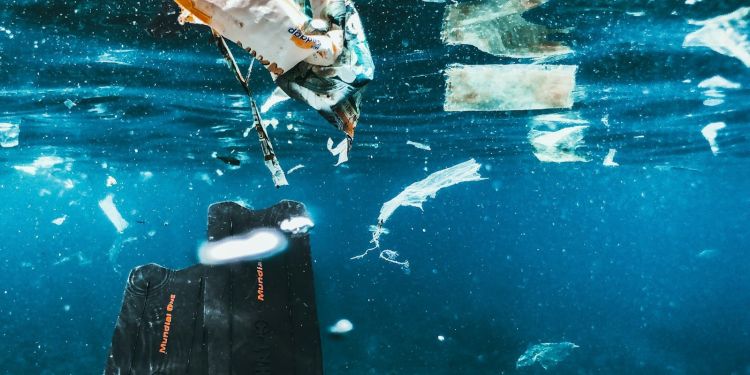Scientists discover deep-sea microplastic hotspots driven by underwater avalanches

Fast-moving underwater avalanches, known as turbidity currents, are responsible for transporting vast quantities of microplastics into the deep sea, according to new research.
The findings, published in Environmental Science and Technology, show that these powerful flows could be capable of travelling at speeds of up to eight meters per second, carrying plastic waste from the continental shelf to depths of more than 3,200 meters.
It was co-written by Dr Edward Keavney in the School of Earth and Environment.
Plastic waste in the ocean
Over 10 million tonnes of plastic waste enter the oceans each year.
While striking images of floating debris have driven efforts to curb pollution, this visible waste accounts for less than 1% of the total.
The missing 99% – primarily made up of fibres from textiles and clothing – is instead sinking into the deep ocean.
Scientists have long suspected that turbidity currents play a major role in distributing microplastics across the seafloor. However, until now, the actual process had not been observed or recorded in a real-world setting.
The latest study conducted by The University of Manchester, the National Oceanography Centre (UK), the University of Leeds (UK), and the Royal Netherlands Institute for Sea Research provides the first field evidence showing the process.
Significant threat to marine ecosystems
The findings pose a significant threat to marine ecosystems and highlight the urgent need for stronger pollution controls.
Dr Peng Chen, lead author on the study at The University of Manchester, said “Microplastics on their own can be toxic to deep-sea life, but they also act as ‘carriers’ transferring other harmful pollutants such as PFAS ‘forever chemicals’ and heavy metals, which makes them an environmental ‘multistressor’ which can affect the entire food chain.”
The research focused on Whittard Canyon in the Celtic Sea, a land-detached canyon over 300 km from the shore.
By combining in-situ monitoring and direct seabed sampling, the team were able to witness a turbidity current in action, moving a huge plume of sediment at over 2.5 metres per second at over 1.5 km water depth.
The samples directly from the flow revealed that these powerful currents were not only carrying just sand and mud, but a significant quantity of microplastic fragments and microfibres.
Dr Keavney used infrared spectrometry to find out the polymer types and degrees of degradation of the microplastics.
His analysis found that the microplastics on the seafloor are mainly comprised of fibres from textiles and clothing, which are not effectively filtered out in domestic wastewater treatment plants and easily enter rivers and oceans.
He said: “Our study shows that microplastics are transported by turbidity currents even in land-detached canyons, approximately 300 km from the nearest coast.
“In addition to microplastics that are sourced from land and transported across the Celtic Margin by cross-continental shelf currents, it also suggests microplastics are sourced from the intensive fishing activity that occurs close to the canyon head and on the canyon interfluves.
“The Canyons Marine Conservation Zone was established in 2013 and aims to limit fishing activity on the Celtic Margin due to the presence of vulnerable ecosystems.
“The expansion of conservation zones and establishment close to other submarine canyons may help to limit future microplastic pollution in the deep sea, alongside other policy interventions.”
Shocking discovery
Dr Ian Kane, Geologist and Environmental Scientist at The University of Manchester, who designed and led the research, said: “These turbidity currents carry the nutrients and oxygen that are vital to sustain deep-sea life, so it is shocking that the same currents are also carrying these tiny plastic particles.
“These biodiversity hotspots are now co-located with microplastic hotspots, which could pose serious risks to deep-sea organisms.
“We hope this new understanding will support mitigation strategies going forward.”
Dr Mike Clare of the National Oceanography Centre, who was a co-lead on the research, added: “Our study has shown how detailed studies of seafloor currents can help us to connect microplastic transport pathways in the deep-sea and find the ‘missing’ microplastics.
“The results highlight the need for policy interventions to limit the future flow of plastics into natural environments and minimise impacts on ocean ecosystems.”
The study team are now focusing on efforts to better understand the effect that microplastics have on marine organisms, for example, sea turtles and deep-sea fauna.




